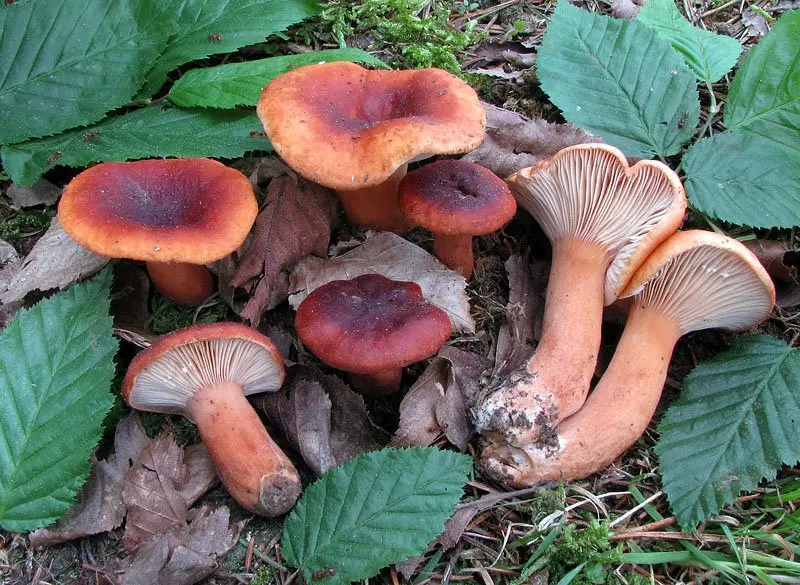Contents
Milky brown-yellow (Lactarius fulvissimus)
- Division: Basidiomycota (Basidiomycetes)
- Subdivision: Agaricomycotina (Agaricomycetes)
- Class: Agaricomycetes (Agaricomycetes)
- Subclass: Incertae sedis (of uncertain position)
- Order: Russulales (Russulovye)
- Family: Russulaceae (Russula)
- Genus: Lactarius (Milky)
- Type: Lactarius fulvissimus (brown-yellow milky)

The brown-yellow milky (Lactarius fulvissimus) is a mushroom of the Russula family, the genus Milky. The main synonym of the name is Lactarius cremor var. laccatus JE Lange.
External description of the fungus
Initially, the definition of brown-yellow lactic was given in an incorrect form. The fruiting body of this type of fungus traditionally consists of a stem and a cap. The diameter of the cap is from 4 to 8.5 cm, initially it is convex, gradually becoming concave. There are no concentration areas on its surface. The color of the cap varies from red-brown to dark orange-brown.
The surface of the stem is smooth, orange-brown or orange-ocher in color. Its length is from 3 to 7.5 cm, and its thickness is from 0.5 to 2 cm. The milky juice of the fungus is characterized by a white color, but becomes yellow when dried. The taste of milky juice is pleasant at first, but the aftertaste is bitter. The lamellar hymenophore is represented by pink-yellow-brown or cream plates.
Mushroom spores of the brown-yellow milkweed (Lactarius fulvissimus) are colorless, covered with small hair spines, connected to each other by ribs. The shape of the spores can be elliptical or spherical, and their dimensions are 6-9 * 5.5-7.5 microns.
Habitat and fruiting period
In some localities and regions of the country, the brown-yellow milkweed (Lactarius fulvissimus) is found quite often, grows in forests of mixed and deciduous types. It is almost impossible to see it under coniferous trees, since the brown-yellow milky grows under deciduous trees (poplars, beeches, hazels, lindens, oaks). Active fruiting of the fungus occurs from July to October.
Edibility
Milky brown-yellow (Lactarius fulvissimus) is not suitable for human consumption.
Similar species, distinctive features from them
The brown-yellow milkweed is similar in appearance to another inedible fungus called the red-girdled milkweed (Lactarius rubrocinctus). However, the cap is characterized by wrinkling, the girdle on the leg has a darker shade, the lamellar hymenophore changes color to slightly purple when damaged. The red-girdled milker grows only under beeches.









